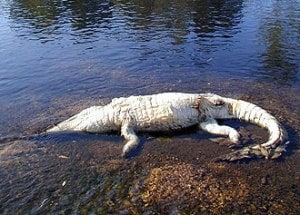Original story by Jarrad Delaney, the West Coast Sentinel
WEST Coast and Eyre Peninsula residents are warned to be on the lookout for a frog species not native to the region.
Populations of the West Australian Spotted Thighed Frog have been spotted across the Eyre Peninsula over the last two years.

Unwelcome guest: Populations of the Western Australian Spotted Thighed Frog (Litoria cyclorhyncha) have been spotted around Eyre Peninsula. Photo: Julian Bentley
A relatively large population was located at the Streaky Bay Area School wetland, and another was collected from the Port Lincoln Racecourse.
Natural Resources Eyre Peninsula’s Landscape Ecologist Greg Kerr said this movement reflects a significant expansion of the frog’s range, which is thought to have been assisted by people.
“There are no frog species to be found on the Nullarbor, this frog naturally occurs around Esperance and Albany in Western Australia,” he said.
“What is concerning is its tolerance to hot and dry conditions, saline water and the fact both the tadpole and adults are predatory of other frog species.”
The Spotted Thighed Frog is very small in size, approximately around 65-88 millimetres in size.
The frog also has green reticulated colouration, with distinct spots along its back, and black with large yellow or white spots on its groin, front side of its thigh and lower legs.
It also has a noticeable call, which is said to be similar to the sound of a motorcycle revving up.
Mr Kerr said the impact of the frog isn’t known yet.
“We don’t yet know what the impact will be if this frog becomes widely established on Eyre Peninsula for local frog populations or other species,” he said.
People are warned the frogs should only be handled when wearing gloves, as its skin excretions are toxic and can cause injury to mucus membranes, including eyes.
Natural Resource Management is currently investigating which wetlands the frogs have already entered.
Anyone who has seen this species or heard its call should contact Greg Kerr on 8688 3111, or at greg.kerr@sa.gov.au.









%20GS.jpg)



